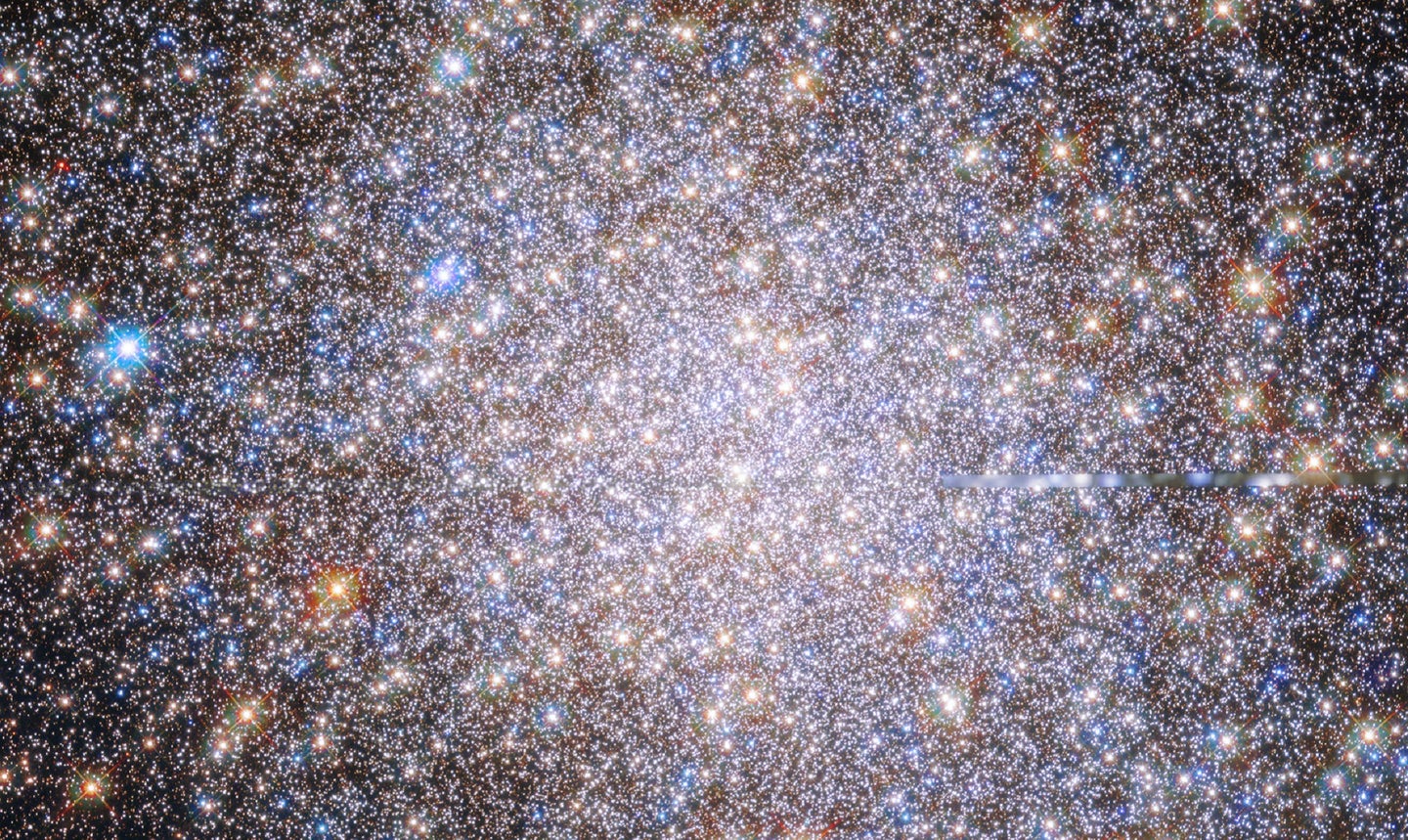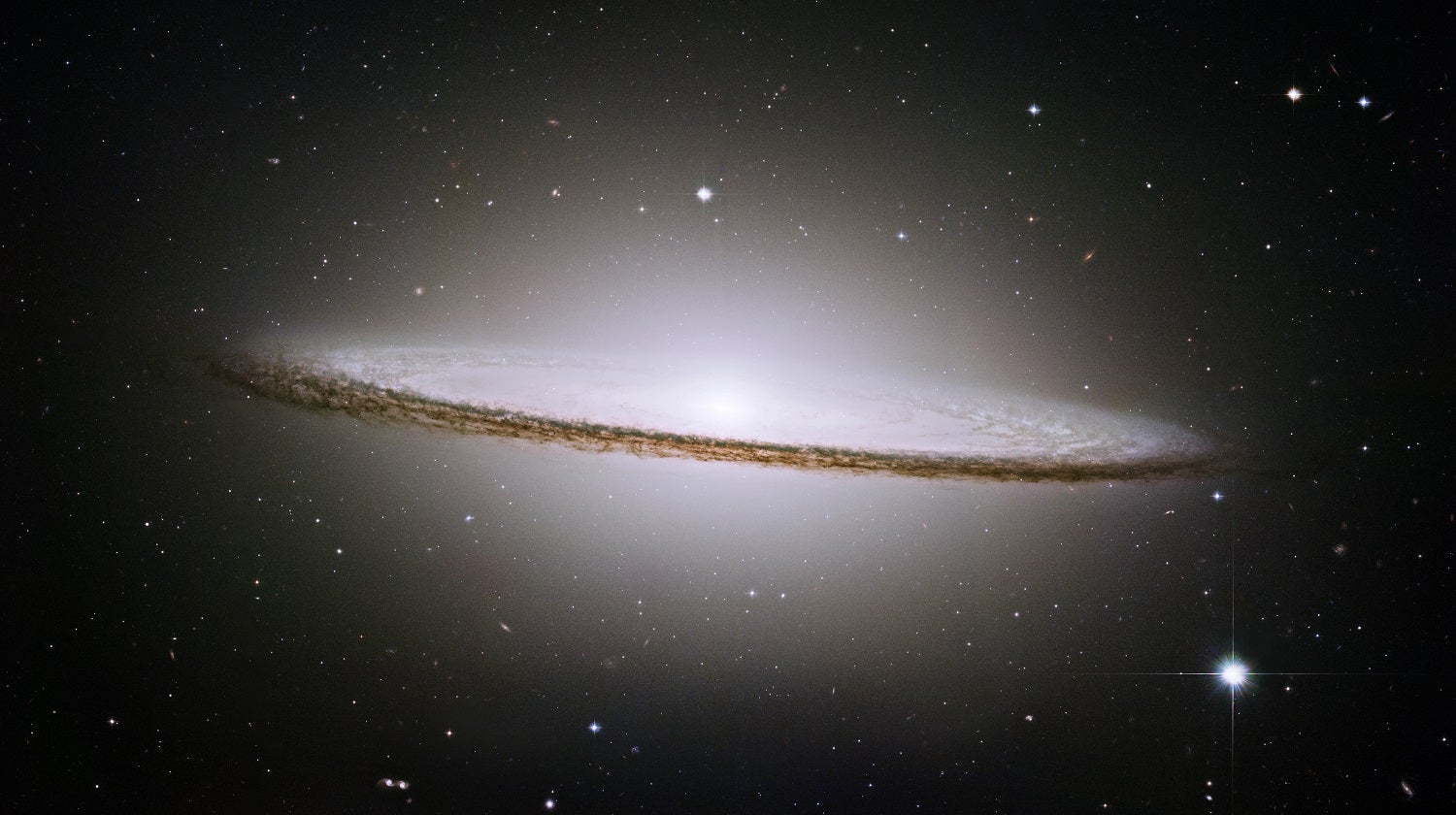How the Hubble telescope is keeping a 265-year-old stargazing project alive
Vintage amateur astronomy meets high-res NASA technology.

When NASA’s Hubble Space Telescope takes an image of a star field, it usually looks more like an abstract painting than a real piece of the universe. In the case of globular cluster M14, those drops of white, blue, and orange paint are more than 150,000 stars packed at the periphery of a spiral galaxy 29,000 light-years away from Earth.
Of course, NASA has shared many stunning views of the universe since Hubble was launched in 1990, but this newly processed image has another claim to fame—it’s known as Messier 14, one of the dozens of celestial objects cataloged by French astronomer and comet hunter Charles Messier beginning in 1758. The objects are bright and relatively easy to see with small ground telescopes, and so are popular with the amateur astronomy community.

But five years ago, the NASA Hubble team decided to begin posting the legendary space telescope’s observations of the vintage catalog online “to give people a chance to view the Messier objects in a way that they might not otherwise be able to do, especially since in many cases we can see colors of light that don’t get through the atmosphere,” says Hubble Operations Project Scientist Kenneth Carpenter. “People can’t see the ultraviolet, for instance, when they look with their ground telescopes.”
Messier was born in 1730 and developed a fascination with comets, ultimately discovering the “Great Comet” of 1769, which exhibited an extremely long tail as it passed near Earth. His catalog grew out of his notes on sightings from the Northern Hemisphere that could be confused as streaking balls of ice and dust to keep other comet seekers from wasting their time. The series includes globular star clusters like M14, nebulae such as the Eagle Nebula (M16) and Crab Nebula (M1), and even the Andromeda galaxy (M31). The numbers indicate the order in which Messier discovered the objects, though he only found 103 of the current 110—additions were made by other astronomers in the mid-20th century.
[Related: Your guide to the types of stars, from their dusty births to violent deaths]
The Hubble Messier Catalog is much newer, according to James Jeletic, NASA’s deputy project manager for Hubble. In 2017, his team was brainstorming ways to get the amateur astronomy community involved and feeling more connected with Hubble science. ”So we said, ‘Well, let’s go back to that Messier catalog,” he recalls. “That way, amateur astronomers can look at an object in their telescope, and then compare it to what Hubble sees.”
The scavenger hunt is not yet complete—the Hubble Messier Catalog currently exhibits images of 84 of the 110 Messier objects and plots them on an interactive map—but that’s partly because of the way in which the Hubble team has gone about building out the collection. They don’t purposefully take new images of Messier objects to add to the catalog; rather they wait for a scientific proposal that overlaps with the targets. That, or they comb through the Hubble archive looking for suitable scenes that haven’t been published yet and process them (as was the case with M14). “We think we found all the ones, for the most part, that are worthy of creating an image out of,” Jelectic explains. “We’re going to search one more time, you know, just to make sure.”

The Hubble team shared the image of M14 on March 19 as part of what’s called a Messier Marathon, an attempt by amateur astronomers to observe all 110 objects in a short time frame; the skygazing conditions in March and early April are considered particularly conducive to Messier Marathons because all of the objects can be seen in a single night around the spring equinox. “If you can view all 110, no matter how long it takes, you become a member of the [official Messier club] and get a certificate and pin,” Jelectic says.
For those in the Southern Hemisphere, the NASA Hubble website also includes images from the Caldwell Catalog, a collection of 109 objects visible compiled in the 1980s by English amateur astronomer Patrick Moore as a counterweight to the Messier Catalog.
[Related: Researchers found what they believe is a 2,000-year-old map of the stars]
Reflecting on the fact that astronomers, both professional and amateur, and the general public are still fascinated by objects first cataloged more than 200 years ago, Carpenter says it illustrates how science progresses over time.
“Every time you build a new telescope, whether it be on the ground or in space, that’s either larger in size so it’s more sensitive, or sensitive to a different color of light than we’ve had previously, you make wonderful new discoveries,” he says. Even after years in the field it still astonishes him what telescopes can seek. “It is just absolutely incredible, both in terms of the science and just in terms of the sheer beauty. I think a telescope is really as much a tool of art, of the creation of art, as it is of the creation and interpretation of science.”